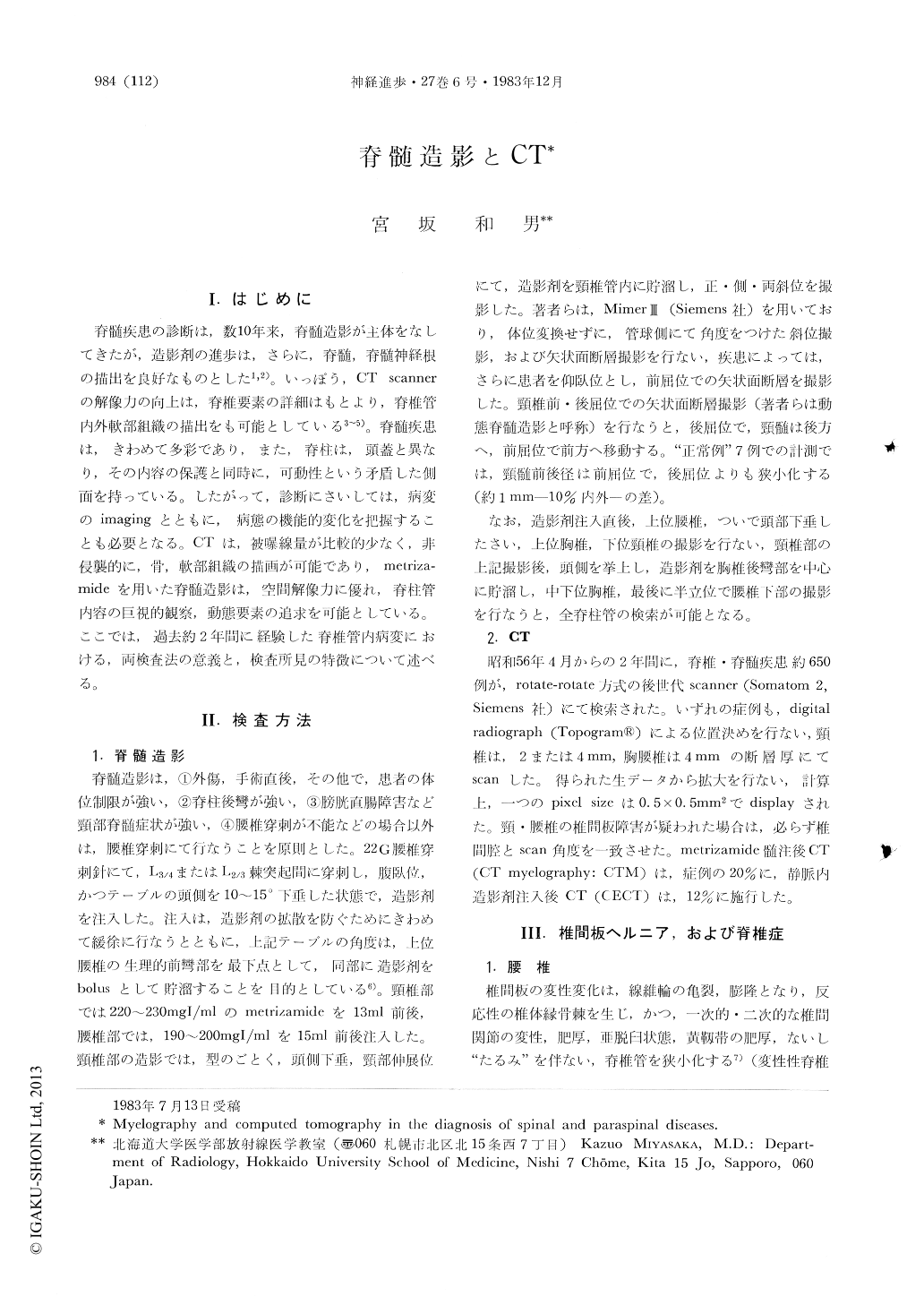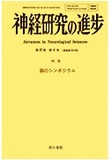Japanese
English
- 有料閲覧
- Abstract 文献概要
- 1ページ目 Look Inside
I.はじめに
脊髄疾患の診断は,数10年来,脊髄造影が主体をなしてきたが,造影剤の進歩は,さらに,脊髄,脊髄神経根の描出を良好なものとした1,2)。いっぽう,CT scannerの解像力の向上は,脊椎要素の詳細はもとより,脊椎管内外軟部組織の描出をも可能としている3〜5)。脊髄疾患は,きわめて多彩であり,また,脊柱は,頭蓋と異なり,その内容の保護と同時に,可動性という矛盾した側面を持っている。したがって,診断にさいしては,病変のimagingとともに,病態の機能的変化を把握することも必要となる。CTは,被曝線量が比較的少なく,非侵襲的に,骨,軟部組織の描画が可能であり,metrizamideを用いた脊髄造影は,空間解像力に優れ,脊柱管内容の巨視的観察,動態要素の追求を可能としている。ここでは,過去約2年間に経験した脊椎管内病変における,両検査法の意義と,検査所見の特徴について述べる。
Recent advance of contrast medium (Metrizamide) has allowed whole spinal myelography which delineates not only anatomical details such as spinal cord and nerve rootlets, but also dynamic changes of spinal diseases. With the advent of high resolution Computed Tomography, on the other hand, spinal and paraspinal lesions have been much accurately demonstrated in their location and extension.

Copyright © 1983, Igaku-Shoin Ltd. All rights reserved.


